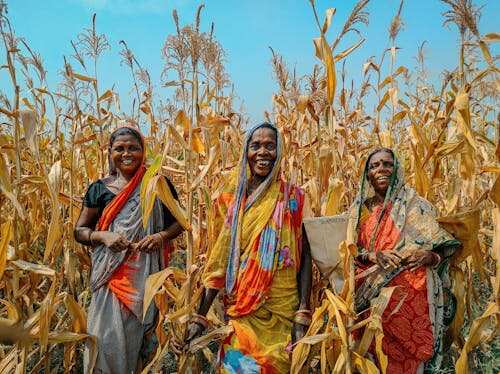PM Narendra Modi 11 Years: As the Narendra Modi-led government completes 11 years, the agricultural sector has emerged as a key area of transformation. Under the guiding principle of “Beej Se Bazaar Tak” (Seed to Market), the government has implemented a range of initiatives aimed at enhancing productivity, supporting farmers, and modernising the sector.
How budget allocation changes to fivefold increase
The budget for the Department of Agriculture and Farmers’ Welfare has seen a rise which surged from Rs 27,663 crore in 2013–14 to Rs 1,37,664.35 crore in 2024–25.
While food grain production has grown from 265.05 million tonnes in 2014–15 to an estimated 347.44 million tonnes in 2024–25 which includes major crops such as rice, wheat, pulses, oilseeds, and coarse cereals. The government has also increased the Minimum Support Price (MSP) for key crops and expanded procurement operations as follows:
Wheat MSP rose from Rs 1,400 per quintal in 2013–14 to Rs 2,425 in 2024–25. MSP payments for wheat during 2014–2024 totaled Rs 6.04 lakh crore, compared to Rs 2.2 lakh crore during 2004–2014.
Paddy MSP increased from Rs 1,310 per quintal in 2013–14 to Rs 2,369 in 2025–26, while Grade-A paddy MSP rose to Rs 2,389 per quintal from Rs 1,345 in the same period. Paddy procurement during 2014–25 stood at 7,608 LMT, with MSP payments amounting to Rs 14.16 lakh crore, compared to 4,590 LMT and Rs 4.44 lakh crore during 2004–14.
The government has emphasized growth by supporting small and marginal farmers, women-led groups, and allied sectors such as dairy and fisheries.
How the government ensure financial security for farmers
To enhance financial stability among farmers, the government launched the PM-Kisan Samman Nidhi scheme in February 2019. As of now, over Rs 3.7 lakh crore has been directly transferred to more than 11 crore farmers through Aadhaar-linked bank accounts using the Direct Benefit Transfer (DBT) system, according to the government. The scheme provides Rs 6,000 annually in three equal instalments.
In addition, the government has also focused on revitalising the pulses and oilseeds sectors. Procurement of pulses at Minimum Support Price (MSP) rose by 7,350 per cent, from 1.52 lakh metric tonnes (LMT) during 2009–2014 to 82.98 LMT during 2020–2025.
Similarly, oilseeds procurement at MSP increased by over 1,500 per cent in the last eleven years.
How the government empowering women farmers
The NaMo Drone Didi scheme which is launched as a central sector initiative to empower women-led Self-Help Groups (SHGs) by equipping them with drone technology for agricultural services.
Between 2024–25 and 2025–26, 15,000 selected SHGs will receive drones to offer rental services for tasks such as spraying liquid fertilizers and pesticides, the government said.
India’s agri-startup ecosystem has seen rapid growth with over 7,000 startups registered in the years.
Between FY 2019–20 and FY 2024–25, 1,943 agri-startups received financial and technical support under the Rashtriya Krishi Vikas Yojana (RKVY).
To further boost innovation, the government and NABARD launched AgriSURE which is a Rs 750 crore Alternative Investment Fund (AIF) to support high-impact agri-startups. The fund focuses on ventures in areas such as FPO support, farm machinery rentals, and agri-tech solutions, aiming to strengthen rural entrepreneurship and capital access.
How farmer’s incomes diversified
Recognising the importance of income diversification, the government has promoted allied activities such as livestock, dairy, fisheries, and food processing. These efforts aim to reduce farmers’ dependence on traditional agriculture and improve rural livelihoods.
Moreover, the food processing sector has played a key role in enhancing farmer incomes. Processing capacity increased from 12 lakh metric tonnes in 2013–14 to 242 lakh metric tonnes in 2024–25. Processed food exports nearly doubled, reaching USD 9.03 billion in 2024–25. The sector now contributes 12.41 per cent of employment in organized manufacturing, offering alternative income sources for rural families.
Blue revolution
India has become the world’s second-largest fish producer, contributing around 8 per cent to global output. Fish production rose from 95.79 lakh tonnes in 2013–14 to 184.02 lakh tonnes in 2023–24. The Union Budget 2025–26 allocated a record Rs 2,703.67 crore to the fisheries sector. A dedicated Department of Fisheries was established to support this growth.
Dairy sector expansion
The nation leads globally in milk production, contributing 25 per cent of the world’s supply.
Milk output increased by 63.56 per cent from 146.3 million tonnes in 2014–15 to 239.2 million tonnes in 2023–24. Meanwhile, per capita milk availability rose to 471 grams per day which surpassed the global average.
The Union Cabinet approved revised schemes including the National Program for Dairy Development (NPDD) and the Rashtriya Gokul Mission (RGM) with a combined outlay of ₹6,190 crore for 2021–26. These aim to enhance milk procurement, processing, and indigenous cattle breeding.
The National Beekeeping and Honey Mission (NBHM), launched in 2020, aims to promote scientific beekeeping. The scheme has been extended to 2025–26 with a total outlay of Rs 500 crore and honey production reached 1.42 lakh metric tonnes in 2022–23
Here are details of key achievements include:
- 167 women SHGs supported
- 79,929 metric tonnes of honey exported in 2022–23
- 6 world-class and 47 mini honey testing labs established
- Over 14,800 beekeepers and 22.39 lakh colonies registered on the Madhukranti Portal
- 7 FPOs for beekeepers formed under TRIFED, NAFED, and NDDB
Anurag Dhole is a seasoned journalist and content writer with a passion for delivering timely, accurate, and engaging stories. With over 8 years of experience in digital media, she covers a wide range of topics—from breaking news and politics to business insights and cultural trends. Jane's writing style blends clarity with depth, aiming to inform and inspire readers in a fast-paced media landscape. When she’s not chasing stories, she’s likely reading investigative features or exploring local cafés for her next writing spot.






